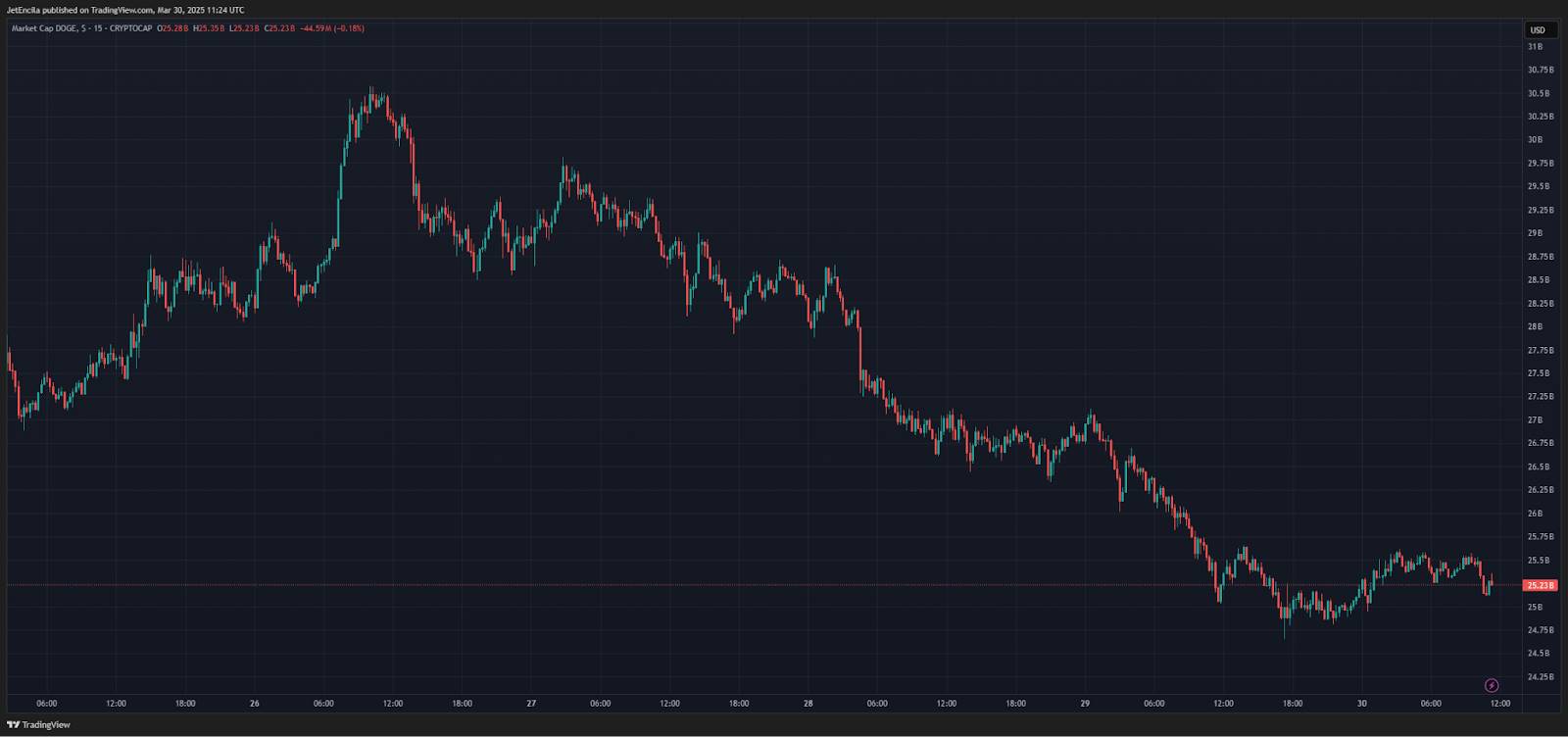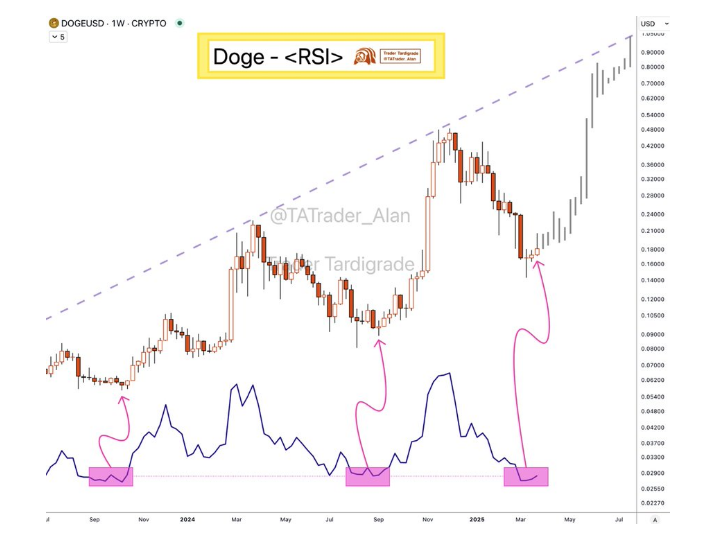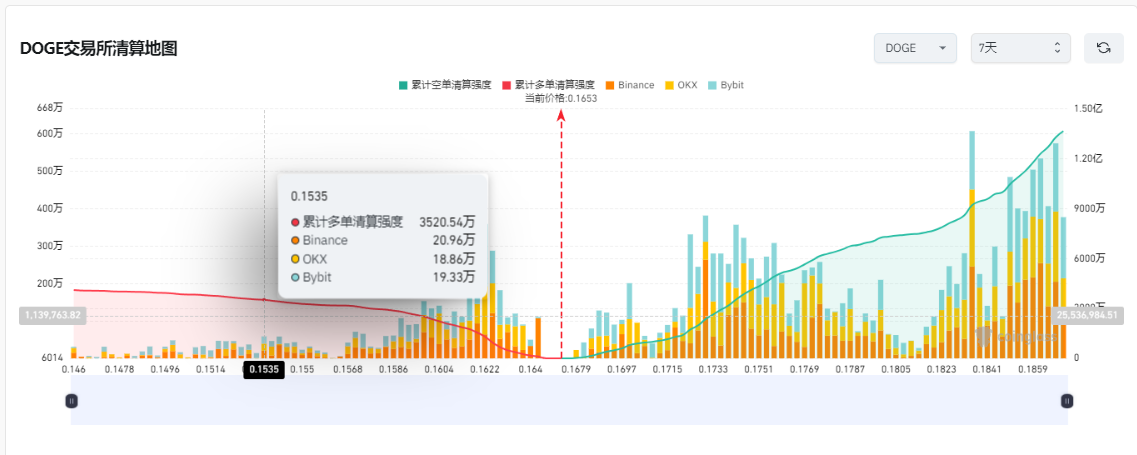Dogecoin is currently undergoing a complex market game, including institutional control, discussions on deflationary mechanisms, expansion of payment ecosystems, and technical pressure testing.
Written by: Lawrence
On March 30, at a town hall meeting hosted by him in Green Bay, Wisconsin, Elon Musk clearly distinguished the relationship between the Department of Government Efficiency (DOGE) and the Dogecoin cryptocurrency.
He said, "As far as I know, the government has no plans to use Dogecoin or any other currency. Although their names are similar, our goal is to improve government efficiency by 15%."
Musk further explained that the name's origin is related to suggestions from the internet. "I originally wanted to name it the Department of Government Efficiency, but it felt too boring," he said. "Later, the internet suggested naming it the Department of Government Efficiency, and I thought it was right."
As Musk firmly denied the connection between the Department of Government Efficiency (DOGE) and Dogecoin at the town hall meeting, a cognitive war triggered by the same abbreviation quietly erupted. This game surrounding technical aspects, policy narratives, and capital leverage is pushing Dogecoin toward a historic bottom's ultimate test.
Naming Dilemma: Quantum Entanglement of Political Symbols and Crypto Assets
Cognitive War of Abbreviations
The Department of Government Efficiency and Dogecoin sharing the DOGE abbreviation is no coincidence. On the eve of the institution's establishment in August 2024, Musk deliberately retained the narrative interface for the crypto community in a naming vote initiated on the X platform. This collision of political engineering and meme culture is essentially Musk's ultimate manipulation of the attention economy—by creating semantic chaos, he reserves a public opinion buffer for policy experiments while injecting continuous topical momentum into Dogecoin.
Cognitive Arbitrage of Visual Symbols
The Shiba Inu logo flash event on the DOGE official website in February 2025 is considered one of the most exquisite cases of cognitive manipulation in modern financial history. The 72-hour visual hint directly triggered a 14% instantaneous increase, with arbitrage funds completing a $70 million harvest amid information asymmetry. This "policy memification" operation reveals a new paradigm of market manipulation: when political symbols and financial symbols form quantum entanglement, the existing definitions of "market manipulation" by regulators can no longer cover this cross-dimensional attack.
Reflexive Trap of Narrative Economics
Within 24 hours of Musk's clarification statement, the sentiment value of DOGE-related tweets plummeted from +68 to -42, yet addresses holding over 100,000 coins increased their holdings by 1.13 billion coins against the trend. This divergence between retail panic selling and institutional stealth accumulation exposes the fatal weakness of narrative economics—short-term emotions are easily manipulated by symbols, while whales have already established cross-market hedging mechanisms.
On-chain Dark War: Silent Harvesting by Whales and Cognitive Deficits of Retail Investors
Binary Split of Chip Distribution
In the past 30 days, addresses holding between 10,000 and 100,000 coins have reduced their holdings by 2.3 billion coins, while addresses holding over 1 million coins have increased their holdings by 4.1 billion coins. This "de-retailization" process has reached a historical peak, with the circulation ratio of the top 1% of addresses rising from 58% to 67%, forming a highly concentrated control pattern. Notably, among the 17 newly added "super whales," 12 completed OTC transactions through Coinbase Prime, indicating that traditional institutions are quietly tightening their nets.
The Code of UTXO Age Distribution
Over 43% of Dogecoin has not moved for over a year, reaching a historical high for "zombie coins." These long-term holders have a cost basis in the $0.05-$0.08 range, and despite the current price dropping by 60%, they still maintain over 200% in unrealized gains. The existence of these "sunk costs" makes conventional wash trading difficult to complete the bottom formation, and extreme events may trigger liquidations.
Paradigm Shift in On-chain Behavior
The Dogecoin network has seen an unprecedented "hoarding-staking" composite strategy: the net outflow from the top 20 exchanges has been positive for nine consecutive weeks, while the locked amount in decentralized staking contracts has increased by 340% during the same period. The shift from trading assets to income-generating assets may reshape valuation models. If annual staking yields stabilize above 8%, DOGE could become a "crypto high-yield bond," attracting conservative capital inflows.
Fundamental Revolution: The Life-and-Death Speed of Deflationary Narratives and Payment Ecosystems
Paradigm Revolution of Supply Mechanisms
Billy Markus, co-founder of Dogecoin, revealed in February that DOGE might implement a deflationary mechanism through community consensus, with specific paths including: developers submitting code modification proposals (GitHub Pull Requests), reaching consensus with the community and miners, and running new protocols. Currently, the total supply of DOGE is approximately 146.78 billion coins, with an annual issuance of 5 billion coins, and the inflation rate gradually decreasing as the total amount increases. Markus emphasized that DOGE's supply mechanism is more flexible than Bitcoin's and may outperform fiat currency systems in the long run. If the deflationary plan is implemented, it could provide long-term support for DOGE's price. However, this plan currently faces strong resistance from miners.
Lightning War of Payment Infrastructure
The number of merchants connected to the Dogebox payment system has surpassed 1,800, with an average daily transaction volume of 2.4 million. If integration with Square and Stripe's APIs can be completed before the second quarter of 2025, Dogecoin may become the first cryptocurrency to cover 5% of offline merchants in the United States. However, regulators are closely scrutinizing its anti-money laundering compliance, and the CFPB has requested KYC data for all transactions exceeding $10,000.
Political Chips in the ETF Game
The approval process for three DOGE ETFs has become a bargaining chip in the game between the Trump administration and the SEC. White House aides revealed that the DOGE plan might be used as a bargaining chip to "support financial innovation" in exchange for SEC approval of spot ETFs. If this political arbitrage is successful, it will introduce tens of billions of dollars in institutional funds into Dogecoin, fundamentally changing the market structure.
Technical Strangulation: The Life-and-Death Game of Bulls and Bears at the $0.16 Defense Line
Temporal Compression of Symmetrical Triangles

On the daily chart, Dogecoin's symmetrical triangle formed since November 2024 is about to enter its final convergence phase. The convergence point of the upper and lower bands at $0.16-$0.18 has become the battleground for bulls and bears, with an 87% historical breakout probability, but the direction of the breakout depends on catalysts.
Alignment of Weekly RSI and Candlestick Patterns

For months, Dogecoin's relative strength index (RSI) has been continuously declining across multiple time frames. On the social media platform X, crypto analyst Trader Tardigrade noticed an interesting phenomenon regarding the RSI indicator on Dogecoin's weekly candlestick chart. He believes that the RSI may rebound from its current level, indicating that Dogecoin is likely to break through the $1 mark.
Final Defense Line of Miner Costs
On-chain data shows that the current price of $0.16 is close to the shutdown price threshold for the three major mining pools. If the price falls below this point, it will trigger the forced exit of $320 million worth of mining machines, creating a positive feedback loop of a "death spiral." However, Glassnode has detected that the top five mining pools have established a $180 million protection in the $0.15-$0.16 range, suggesting that major funds are firmly defending this bottom line.
Under Currents in the Derivatives Market

Coinglass data shows that the current open interest in Dogecoin contracts has significantly decreased, and the funding rate has turned negative. This extremely bearish structure, combined with a continuously negative funding rate (-0.03%), suggests that the market has priced in the most pessimistic expectations. Coupled with the exchange's liquidation data, Dogecoin's derivatives market may trigger a short squeeze, indicating that Dogecoin may have reached a temporary bottom.
Ultimate Revelation: Finding Order in Chaos
When Musk insists on naming the government reform plan DOGE, he may have already grasped the wealth code of the post-truth era: in a world where consensus is scarcer than code, the bottom is not a simple point of technical indicators but a critical point of collective cognition. Dogecoin is undergoing the most complex pressure test in the history of crypto civilization—it is both the grave digger of the old paradigm and the midwife of the new order.
免责声明:本文章仅代表作者个人观点,不代表本平台的立场和观点。本文章仅供信息分享,不构成对任何人的任何投资建议。用户与作者之间的任何争议,与本平台无关。如网页中刊载的文章或图片涉及侵权,请提供相关的权利证明和身份证明发送邮件到support@aicoin.com,本平台相关工作人员将会进行核查。




